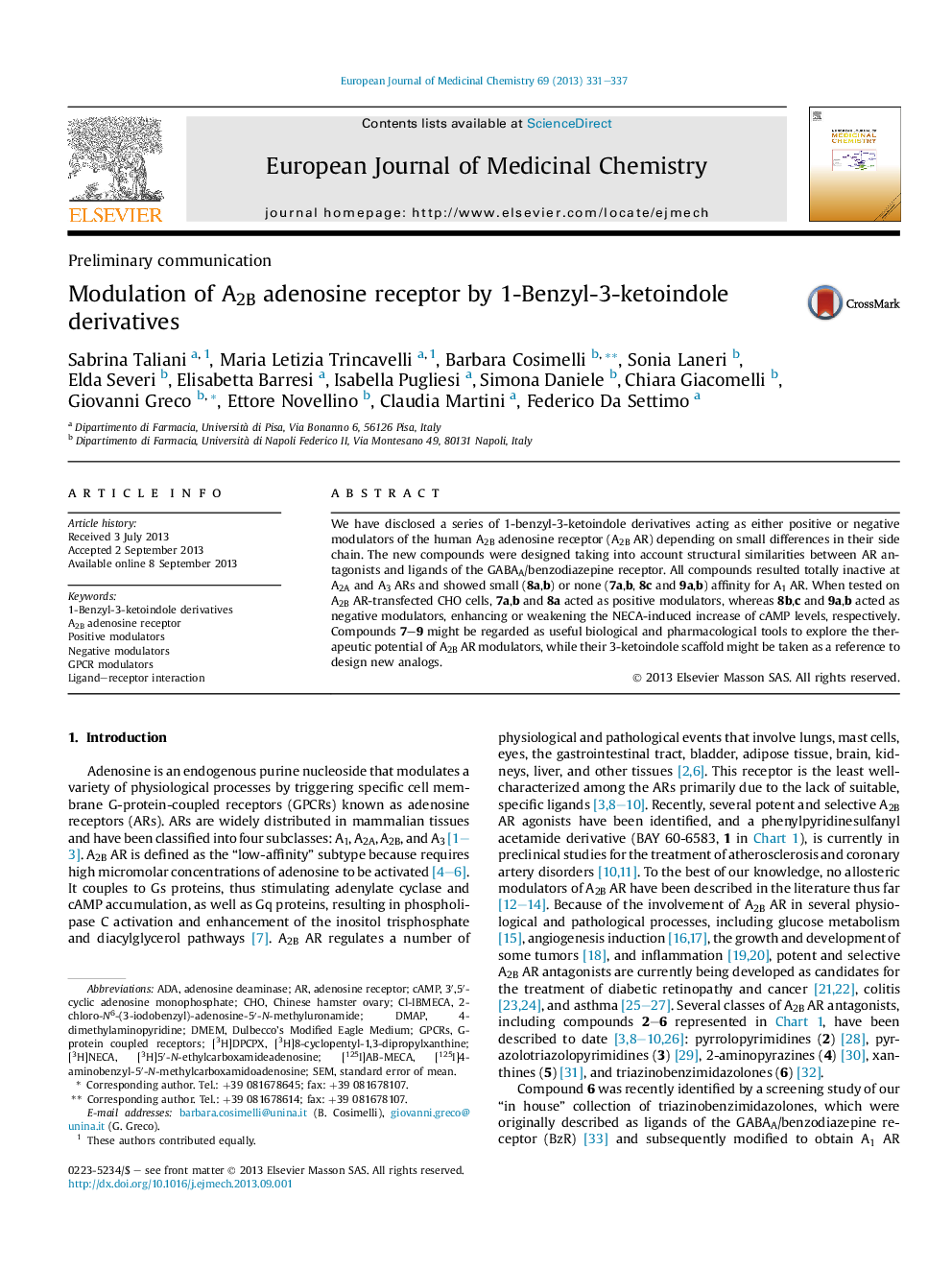| Article ID | Journal | Published Year | Pages | File Type |
|---|---|---|---|---|
| 1399061 | European Journal of Medicinal Chemistry | 2013 | 7 Pages |
•We identified new positive and negative modulators of the human A2B adenosine receptor (A2B AR).•All are unable to bind A2A and A3 ARs and show low or no affinity towards A1 AR.•The new compounds are 1-benzyl-3-ketoindole derivatives.•Small structural differences lead to positive or negative modulation.•They may help to explore the therapeutic potential of A2B AR modulators.
We have disclosed a series of 1-benzyl-3-ketoindole derivatives acting as either positive or negative modulators of the human A2B adenosine receptor (A2B AR) depending on small differences in their side chain. The new compounds were designed taking into account structural similarities between AR antagonists and ligands of the GABAA/benzodiazepine receptor. All compounds resulted totally inactive at A2A and A3 ARs and showed small (8a,b) or none (7a,b, 8c and 9a,b) affinity for A1 AR. When tested on A2B AR-transfected CHO cells, 7a,b and 8a acted as positive modulators, whereas 8b,c and 9a,b acted as negative modulators, enhancing or weakening the NECA-induced increase of cAMP levels, respectively. Compounds 7–9 might be regarded as useful biological and pharmacological tools to explore the therapeutic potential of A2B AR modulators, while their 3-ketoindole scaffold might be taken as a reference to design new analogs.
Graphical abstractFigure optionsDownload full-size imageDownload as PowerPoint slide
